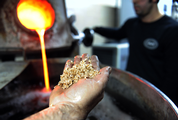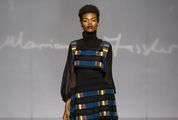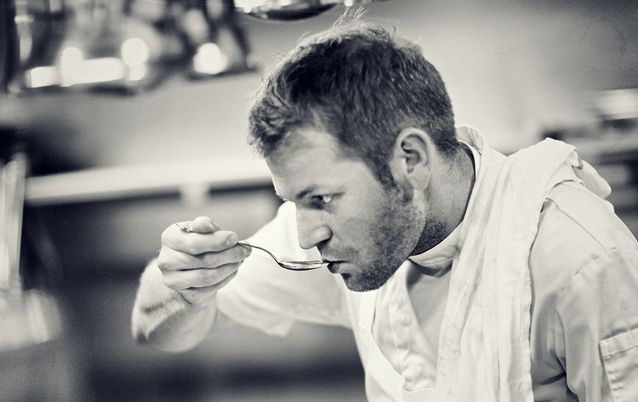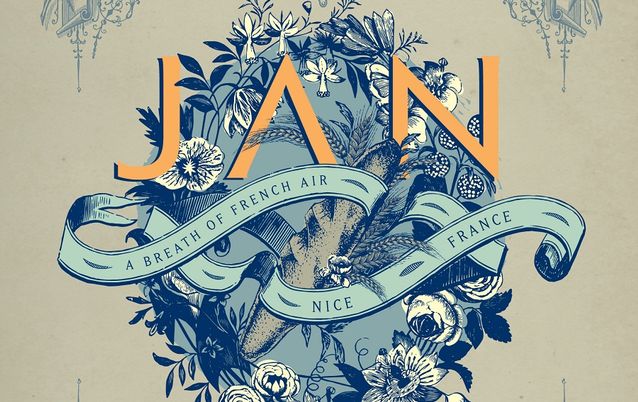ONE day a batch of live ducks arrived at South African chef Jan Hendrik van der Westhuizen’s restaurant in Nice, France.
"There was a massive communication gap," says Van der Westhuizen, the first South African chef to be awarded a Michelin star — the Oscars of the restaurant world. "I thought I ordered duck breasts."
Shocked, and with patrons already placing orders, Van der Westhuizen ran into the next door butchery.
"I didn’t know the guy, so we ran in and just pointed, ‘Those, we’ll take all of those’. He was thinking who’s this little guy in the white chef’s jacket... My French is still only 60%."
Van der Westhuizen relates the tale while in SA to promote his second book, Jan: A Breath of French Air.
Duck breasts bought, the show went on, as it must in the sort of restaurant that has steadily risen in the ranks to attain a Michelin star.
Van der Westhuizen established Jan in 2013, after two years’ working on yachts in Monaco. For the restaurant it has been a short ride to stardom; for Van der Westhuizen, the Michelin star is the result of years of dedication.
"It feels like 50 years," he says. "There are moments when you think, ‘What am I doing here? What have I done to myself? All my friends are (in SA)’."
Jan was first mentioned by Michelin — the oldest European hotel and restaurant reference guide, which awards Michelin one, two or three stars for excellence to a select few establishments — months after opening. It waited three years for a star. Some wait in vain.
Michelin sends anonymous critics to restaurants, only letting the restaurant know after the meal is done. If a restaurant piques interest, the company sends more "secret diners" before awarding a star or three. "The criteria are unknown," says Van der Westhuizen. "There are lots of rumours ...that they drop a knife to see if you notice and replace it."
It was during a busy evening that the company phoned to let Van der Westhuizen know that Jan was getting a star. He was busy and refused to take the call despite entreaties from the restaurant receptionist. It was late when he got around to phoning back.
"I was in my car. The note said call me anytime, as soon as possible. It was around midnight. All I could understand — my French isn’t so good — was Michelin and star and that I was the first South African and I had to go to Paris and please don’t tell anyone. So of course I phoned 30 people. This is the Oscars for food."
Van der Westhuizen, raised on a farm in SA’s north, worked as a contributing food editor for Elle magazine in SA and France, after completing an advanced diploma in culinary arts and a BA in applied design and photography.
While in France, working at Elle à Table — the French fashion magazine group’s food publication — Van der Westhuizen took a weekend trip to Monaco that changed his life.
"I thought, juslaaikit, there are so many yachties here and the lifestyle is great. I started working on a boat for some Swedish people. It was a good time to save up a piggy bank."
Piggy bank saved, Van der Westhuizen and Frenchman Pascal Szafranski "went 50-50 on an ugly scooter shop". They turned it into Jan, the restaurant. Szafranski is the businessman in the partnership, and Van der Westhuizen says his help is indispensable. "He got me through all the red tape that there is in France."
Now Jan is famous for its haute cuisine.
"Jan was never supposed to be such a fine dining restaurant. ...We got the chairs, beautiful chairs, made in Paris, and then the atmosphere was dark and cosy and one thing led to another, and also I just felt comfortable cooking gastronomy."
The book Van der Westhuizen is promoting — his second — is a reinterpretation of food he serves at Jan. "There are lots of dishes we do in the restaurant (in the book), but there are lots that you can do at home. ...There are chapters on staff food, bolognese and that, and there’s midnight snacks, stuff I eat at home — biltong and chip sandwiches."
Staff food includes recipes for tempura courgette flowers stuffed with ricotta, along with the bolognese, but it is the recipes with a hint of SA that are most interesting: naartjie panna cotta with white chocolate rocks, burnt butter, honey and buchu madeleines, milk tart croquembouche.
Along with the recipes, all set out clearly, are Van der Westhuizen’s gorgeous photographs of the restaurant and the food, plus vignettes of life in France, and in the restaurant. This is a coffee-table book that will repeatedly find itself in the kitchen.
"It built up over time," Van der Westhuizen says of the South African element to the menu. "We have mosbolletjes (a sort of sweet brioche, traditionally made with fermented grape juice) on the table, the raw dough, under a glass dome. The guests can watch the dough rise."
Later a waiter removes the dough for baking and return — dinners take two-and-a-half hours, with eight courses.
Van der Westhuizen says he believes "you kind of need to follow your stars", and that his success is partly due to being in the right place at the right time. It is, however, evident he is completely dedicated to Jan. Even in SA on his book tour, he keeps watch on the restaurant, using a mobile app called Nest that is designed to help homeowners control their nest when they are away.
"See, I can zoom in on the kitchen," he says, leaning in. "I can say, ‘Hey, you, that guy dropped his napkin when he went to the toilet, pick it up’. Not really, but ...".




























Change: 1.19%
Change: 1.36%
Change: 2.19%
Change: 1.49%
Change: -0.77%
Data supplied by Profile Data
Change: -0.19%
Change: 0.69%
Change: 1.19%
Change: 0.00%
Change: 0.44%
Data supplied by Profile Data
Change: 0.62%
Change: 0.61%
Change: 0.23%
Change: 0.52%
Change: 0.12%
Data supplied by Profile Data
Change: -0.21%
Change: -1.22%
Change: -0.69%
Change: -0.51%
Change: 0.07%
Data supplied by Profile Data